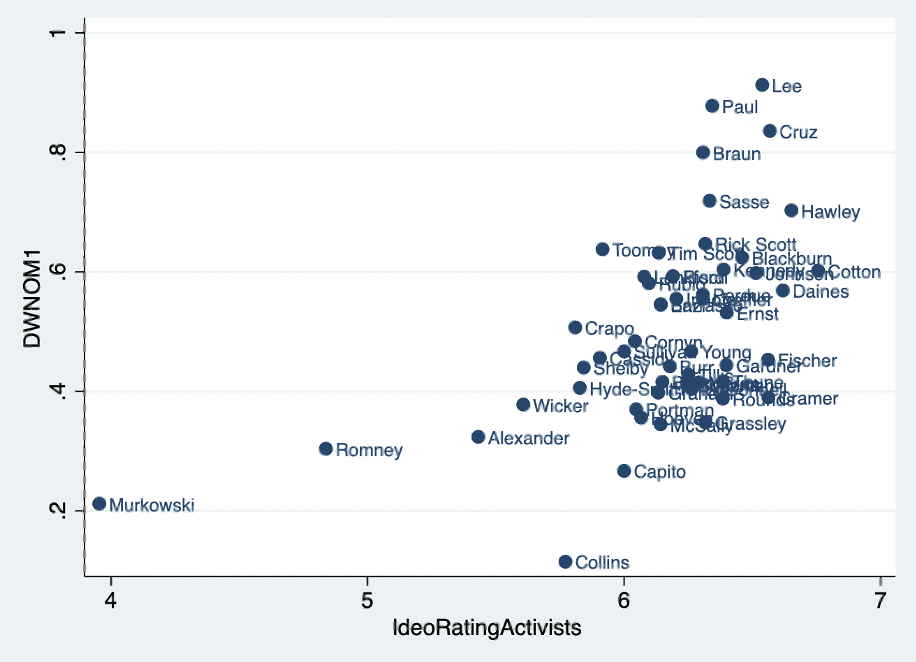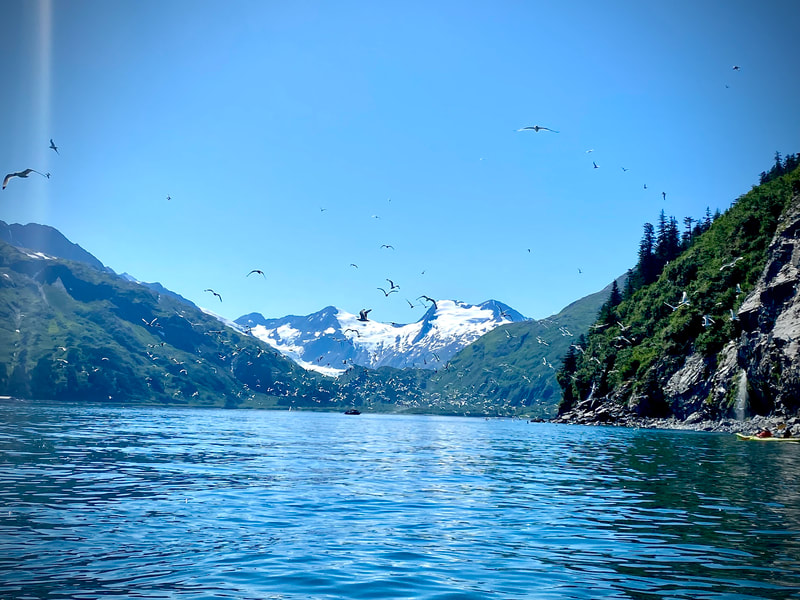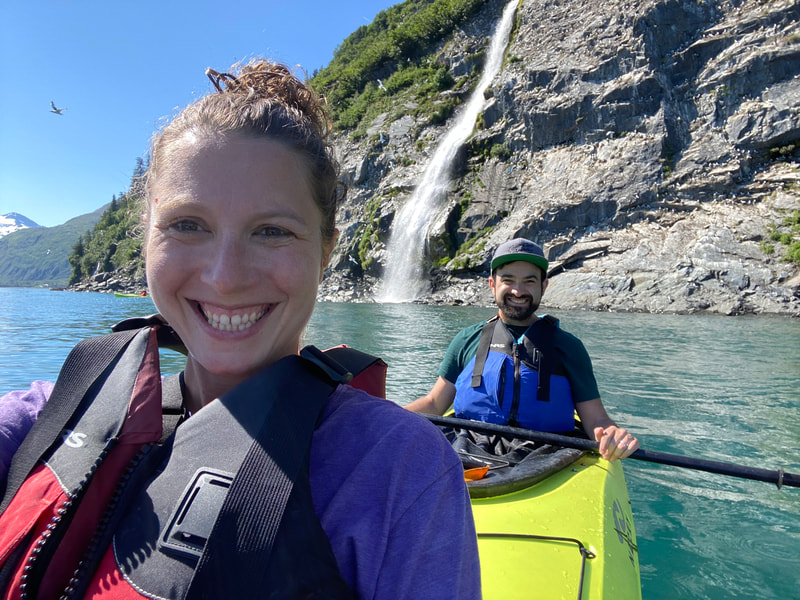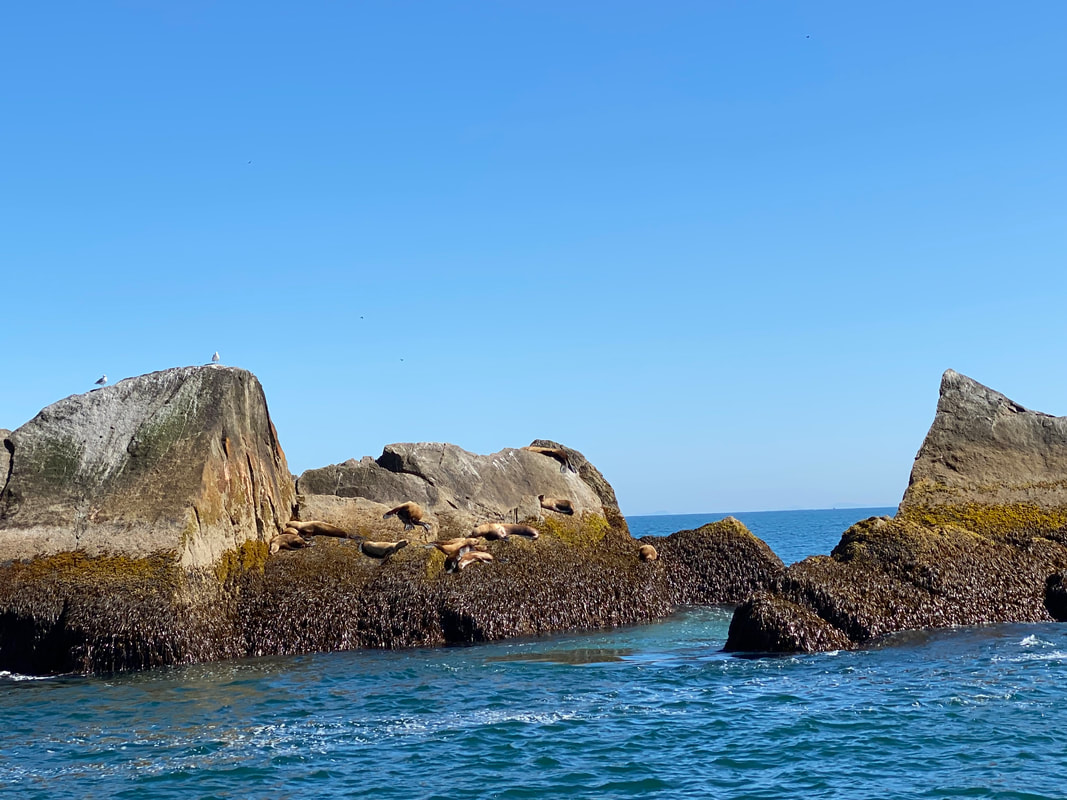|
A lot is happening over here!
First- My student Alec and I finalized our publication about how the news media uses the phrase "identity politics" (per my last post). I look forward to seeing it in PS: Political Science and Politics. Second- I got a Revise and Resubmit verdict on my paper about whether supporting Donald Trump makes a politician appear more "conservative" to the public (Spoiler: it does. People who praise Trump are seen as a full point more conservative than identical candidates who do not endorse him.) Some of the nicest reviews I ever gotten! I'll be making some updates to the theory (including some political identity work by Mason) and some of the CCES analysis that I conducted to replicate a related finding by Hopkins and Noel. Third- I welcomed a son into the world in January. He is the cutest. However, this has made it incredibly hard to do work. Motivation is at an all time low. I expected this, which is why I worked hard in the first few months of the sabbatical. This experience has also made me an absolute advocate for paternity leave, something I rarely thought about until now.
5 Comments
 My former student Alec and I just got an acceptance for a paper we started in the Summer of 2020 called "How the media uses the phrase 'Identity Politics'". It was accepted at PS: Political Science and Politics. In this paper, we look at the recent uptick in the mainstream media's use of this word, which peaked in 2016. We then code its use for a number of features including the tone, which side of the political spectrum it is tied to and whether the use was editorialized or not. We also argue that political communication theories such as second level agenda setting (or framing) should be used to analyze how the media uses emerging phrases such as this (ie. "woke", "cancel culture" etc) In the past, scholars have content analyzed similar phrases (like "politically correct") without really applying political science or political communication theories to the analysis. We should! It's been a while since I updated this. I am still doing research on whether association/support for Donald Trump affects perceptions of conservatism. Some highlights:
The CCES data from 2020, as shown below, does indicate that endorsements from Trump- or endorsing him- leads to greater perceived conservatism, even when controlling for DW Nominate first dimension scores. However, candidate running for office don't have DW Nominate scores. The CAN endorse Trump, but their endorsements are less important than, say, a sitting incumbent who is known to the public. Thus, they leave us with less data unless we want to develop sophisticated measures of how much their social media accounts or their TV ads praise Trump. However, we can look at them a bit more qualitatively. Here are the top 10 most conservatively rated candidates in the CCES 2020 data. 1. Lauren Witzke (DE) 2. Jason Lewis (MN) 3. Corky Messner (NH) 4. Cynthia Lummis (WY) 5. John James (MI) 6. Roger Marshall (KS) 7. Karen Handel (GA) 8. Daniel Gade (VA) 9. Mark Ronchetti (NM) 10. Lauren Boebert (CO) The most interesting aspect of this last is that 2 candidates here- Lauren Witzke and Lauren Boebert- have ties to QAnon. In theory, Qanon has nothing to do with conservatism. It is a mass delusion that sounds even crazier than something on the cover of a supermarket tabloid from the 1990s. It is divorced from the role and size of government. But nonetheless, these two candidates are rated in the top 10. Jason Lewis, rated the second most conservative candidate, is a far right-wing radio host who has been referred to as "mini Trump" by a number of local MN and national news outlets. There ARE candidates here- like John James, Daniel Gade and Mark Ronchetti- who are not overly associated with Trump- at least not comparatively. But the fact that 3 exhibit highly Trumpian qualities is indeed interesting and worthy of further scrutiny. A conjoint experiment that lists conspiracy theories as one of many candidate traits might be a good route to explore in future analyses. Speaking of experiments, I ran an experiment on Mechanical Turk in which the only aspect of a candidate profile that varied was their support for- or opposition to- Donald Trump generally. Candidates who supported him were rated more than 1 full point for conservatively on a 7 point scale compared to a baseline candidate. This is a LARGE effect size., Candidates who repudiated him were seen as no different from a baseline candidate. More coming on that soon.... I have updated my Noel and Hopkins analyses to include all candidates running for House and Senate seats in 2020. The results hold- getting endorsed by Trump or endorsing Trump lead people to perceive a candidate as more conservative than those who did not get endorsed or endorse him. The effect sizes are not huge but they exist! More soon.
Continuing my extension of the work by Noel and Hopkins, I'm finally done compiling the CCES data on how people rate their House member (the previous post was how they rate their Senators). Since there are way more House members in the US, this gives me a larger N size. However, the ratings themselves aren't as good. Even though the CCES has 60,000 respondents, when you actually break it down by individual district, there aren't THAT many respondents per district- and some districts are sparse meaning they will have very few respondents. Because of this, I wasn't able to subset the data by "activists" vs. "non-activists". Doing so would REALLY limit the number of respondents making these ideological judgements. So I've got a lot of people making these ratings who may not be super familiar with politics and their legislator. However, much of that will be captured by the people who chose "Don't Know" (whom I discarded). Anyway, these are the regression results! The regression above is for House members only. The DV is the average ideology score (1=Extremely liberal, 7=Extremely conservative) and the IVs are each legislators' DW Nominate Score (first dimension) and whether they endorsed Trump in 2020. Both are highly significant. There seems to be something about endorsing Trump- separate from someone's actual voting record- that accounts for some movement on the ideology scale. Legislators who endorsed Trump are seen as more conservative, although the coefficient is relatively small. Let's see what happens when we COMBINE the data from the Senate and the House together to increase the statistical power. Again, it seems as though endorsing Trump makes people perceive the Congressman/woman as more conservative. This effect is unique from someone's voting record. I also have a dummy for whether people in the Senate are just considered more conservative than members of the House. They are not, and the coefficient is negative.
So what does this tell us and what does it NOT tell us? Well, there may be something about "closeness to Trump" through endorsing him in 2020 that makes people view their Congress person as more conservative. But we cannot show causality here. Perhaps people who endorsed Trump were in more vulnerable districts and suddenly started waxing poetic about conservative policies in their campaigns in order to bring out the Republican base. We don't know. That's why I plan to run something experimental in the near future and test whether there's a causal mechanism at play. My sabbatical work asks the simple question "Has Donald Trump changed the meaning of "conservatism" for the mass public?" A couple authors have started to look into this question- or have found evidence that speaks to this question while studying ideology. Noel and Hopkins have a great forthcoming article that samples activists, asking them to make pairwise comparisons between Republican Senators to determine which is the more conservative of the two. They then use those scores to create a unidimensional scale of ideology. They found that Senators who criticized Trump in 2016 were considered more moderate, despite conservative voting records. They also use some 2016 CCES data to show this pattern. I'm replicating some of their work as a first step in my project, which has three stages. Stage 1: Does standing against Trump/criticizing Trump make a Republican- regardless of their actual ideology as measured by their voting record-appear more moderate to the mass public? Does associating/supporting Trump make a politician appear more conservative- regardless of their voting record? Here's a first cut at the CCES 2020 data which asks respondents in every state to rate their Senators on a 7 point scale going from "Extremely liberal" (1) to "Extremely conservative" (7). Below are the ratings from activists only. "Activist" is operationalized as any respondent who said they engaged in at least 3 political activities (donating, working for a campaign, putting up a yard sign etc.) in the last 12 months. These people will be more likely to actually know about their Senators which means they are less likely to take a random guess and introduce real noise in the data. The perceived ideology scores are plotted against the Senators DW Nominate scores in the first dimension. Most of the ratings pass a basic face validity test- at least comparatively. Murkowski and Romney ARE more moderate in their voting records and are rated as such by the activists. Collins, who votes quite moderately though, is rated noticeably more conservative than the other two. This is perhaps because she equivocated a great deal on Trumpism, and ultimately sided with him sometimes. Note that this survey was administered PRIOR to the second impeachment trail in which Collins voted to impeach (she did not vote to impeach during the first impeachment). Above is a regression - with an admittedly small N size- that regresses the activist ratings onto two variables: the DWNominate score (first dimension) and whether the Senator endorsed Trump in the 2020 election. In initially included a variable for whether TRUMP endorsed THE SENATOR for the 2020 election, but since many Senators were not up for re-election, this variable is not ideal. But we do see some significance on the variable of whether the Senator endorsed Trump- which anyone was able to do. We see even more significance on this variable if we use the ratings from all respondents rather than just the activists.
I might try to add the data from 2018 to this analysis when some other anti-Trump members such as Jeff Flake were still in office. Stay tuned. Got an R&R on a content analysis piece I've been working on with a student for about a year. Great news! This will dig a little bit into my sabbatical work time, but it'll be worth it.
I also have a sabbatical work "accountability buddy", a grad school friend who is also on sabbatical and working on a book project. Should be good in forcing me to get work done. This trip has been superb (minus some bad weather in Denali). On our last day, we did one final trail which I had been looking forward to almost as much as Harding Ice Trail: Crow Pass. Now, the FULL ON Crow Pass Trail is 24 miles or so and requires some real technical skill like going through rivers. We obviously weren't doing that- we were doing a 6.2 mile offshoot of the trail which is way up in the mountains. It was a perfect sunny day and this trail did not disappoint. It was everything the photos online promised: giant, steep, dramatic hillsides, some changing color in the rocks, a beautiful glacial lake and stream at the end where there's a lean-to style cabin. The only thing we didn't see were mountain goats. We left our bear spray at the end of the trail because we didn't end up using it. Perhaps another group will take it and use it themselves. Images below- this hike was stunning. Maybe the prettiest of all the hikes I've done in Alaska. I'll end this series with my absolute favorite poem by Robert Service: The Land of Beyond
Have you ever heard of the Land of Beyond, That dream at the gates of the day? Alluring it lies at the skirts of the skies, And ever so far away; Alluring it calls: O ye yoke of galls! And ye of the trails overfond With saddle and pack, by paddle and track, Let’s go to the Land of Beyond! Have ever you stood where the silences brood, And vast the horizons begin, At the dawn of the day to behold far away The goal you would strive for and win? Yet ah! in the night when you gain to the height, With the vast pool of heaven star-spawned, Afar and agleam, like a valley of dream, Still mocks you the Land of Beyond. Thank God! there is always the Land of Beyond For those who are true to the trail; A vision to seek, a beckoning peak, A farn-ess that never will fail; A pride in our soul that mocks at a goal, A manhood that irks at a bond, And try how we will, unattainable still, Behold it, our Land of Beyond! Another day where I don't have to use my legs so they can recover from Harding Ice Field Trail. Today we drove back up North a bit to a tiny, tiny town called Whittier. To get there, you can to go through a one way traffic tunnel, which is the longest tunnel in the US. There are designated times you can travel each way. The entire thing looked like a mine shaft. See below. By the way- at one point in time, the entire town of Whittier lived in one building, which is now a condemned abandoned monstrosity that looks like something from soviet Russia. Whittier is a secluded harbor town surrounded by mountains and glaciers. We took a kayaking tour of the area which featured some coves where enormous schools of salmon and a rookery of thousands of seagulls perched on the cliffs next to a large waterfall. Below if you look closely you can see lots of birds near that waterfall in the photos. We also saw a bald eagle flying around the fish cove, which was awesome. Sadly didn't get a photo of that.
My calves are DEAD from the Harding Ice Trail. Luckily the next two days don't involve walking. Today we did a boat tour through Kenai Fjords at the edge of Seward. It's our second national park on this trip. The conditions were absolutely perfect- sunny and visible. We really lucked out on this tour- we saw three humpback whales breach the surface of the water and one of them straight up Free Willied himself completely out (didn't get that photo unfortunately). But that's the dream when you're looking for whales- a full on breach. Below is the best shot I got of a whale coming out of the water. Zooming in helps. Here's another whale- you cant really see him but its a cool shot because of the water you can see shooting out of the blow hole. Below are some seals hanging out and conserving energy, which is what they do for most of the day. We also pulled the boat directly up to a glacier. This thing was making NOISE. You could hear it cracking and then it "calved" which is when pieces fall off. We probably saw 3-4 chunks fall off and into the water. It was pretty disconcerting but it happens often. If you can believe it, this glacier moves 6-7 feet per DAY. When you get up close to these things you can see seals all along the bottom hanging out. You can also see how blue the ice gets when it's compressed. The visuals around us the entire time were stunning- gigantic green mountains with snow streaks. There were chunks of ice in the water near the glaciers and lots of picturesque boats floating by with tours, fisherman, kayakers etc. It was a perfect Saturday and everyone was out on the water after many days of cloudy skies. My favorite image is below. You can see a small white boat at the bottom. That night we hit up a bar and everyone was cheering for Lydia Jacoby, the Olympic swimming who won the gold a few days prior. She was swimming in real time and we got to see her hometown crowd go nuts. It was a pretty unique experience.
|
AuthorWrite something about yourself. No need to be fancy, just an overview. Archives
February 2022
Categories |































 RSS Feed
RSS Feed
